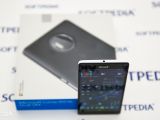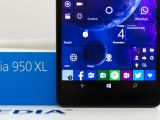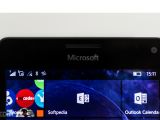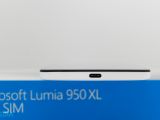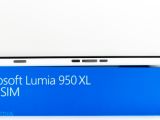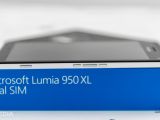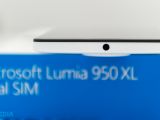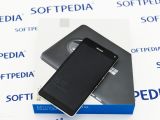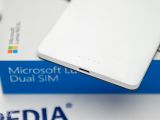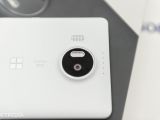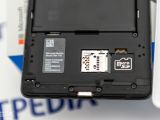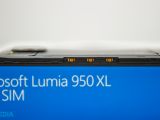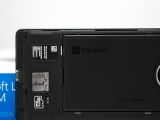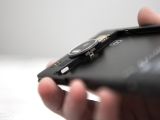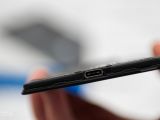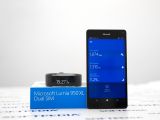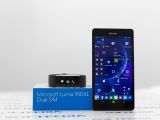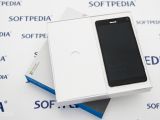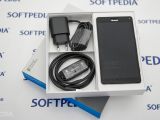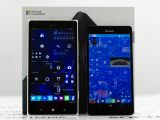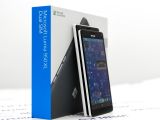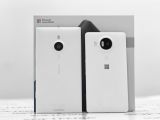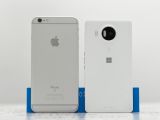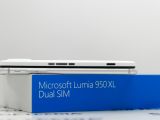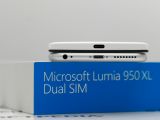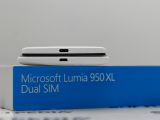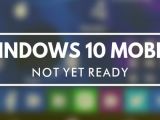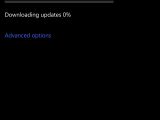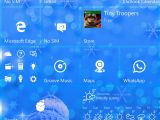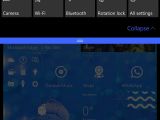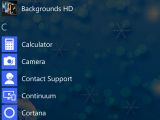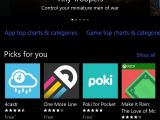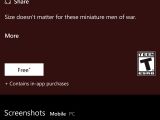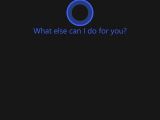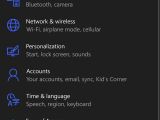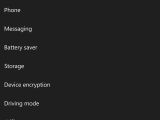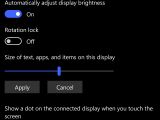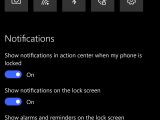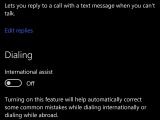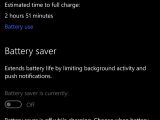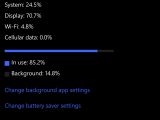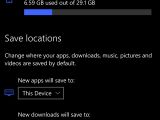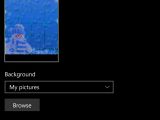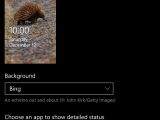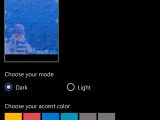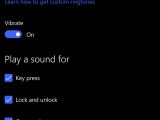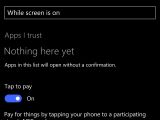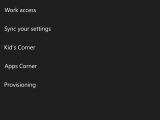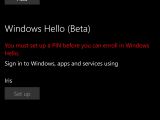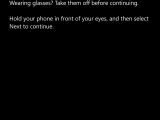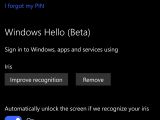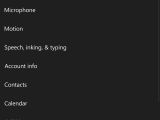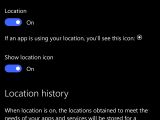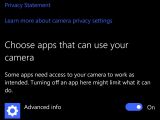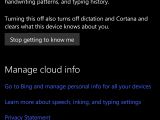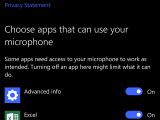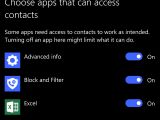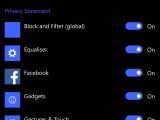| INTRODUCTION | HARDWARE |
|---|---|
| BUILD QUALITY | PERFORMANCE |
| CAMERA | WINDOWS 10 MOBILE |
| BATTERY | CONCLUSIONS |
Thousands of layoffs, internal leadership shakeups, several high-profile executives leaving the company, and a completely new approach supposed to make Microsoft work more effectively in all business areas. These were all the premises of the new Microsoft, a company whose main purpose was to build things for "people who do" and to "empower the world to do more."
Part of this new approach was also a new mobile strategy that would involve giving up on the plethora of Lumia devices running Windows Phone, and focusing on just three different market segments, namely value/budget phones, mid-range devices, and flagships. At the same time, the company also started work on a new operating system called Windows 10 Mobile, built just like its PC sibling, with help from testers around the word.
On October 6, 2015, Microsoft used a hardware event in New York to take the wraps off the first phones that were built on this approach, mixing the new more effective device strategy with the overhauled operating system.
The Lumia 950 and Lumia 950 XL are the company's new flagships, both of them running Windows 10 Mobile and both coming with absolutely the best the company has to offer right now. This means that if you buy one of the two, you should get pretty much the best possible experience on a Windows 10 Mobile device because no other company could offer you more than Microsoft, the creator of the operating system.
We've tested the Lumia 950 XL dual-SIM in white for the past two weeks, and you can find our conclusions in the paragraphs below.
Before anything, there's something that really needs to be said. I'm a long-time Windows Phone user and have been part of the Insider program from the very beginning, so I pretty much knew what to expect. But after trying almost every single Windows Phone device and owning several, including 830, 930, 1520, 640 XL, and 520, there's no doubt that expectations were high.
We'll divide this review into several different sections, focused on hardware and software, but each will have its very own subsections, and you'll figure out later why this was the best choice. Read on to discover our findings about Microsoft's new flagship device.
| Dimensions | 151.9 x 78.4 x 8.1 mm (5.98 x 3.09 x 0.32 inches) |
|---|---|
| Weight | 165 g (5.82 oz) |
Let's start with the display. The XL comes with a 5.7-inch AMOLED capacitive screen with 16 million colors, a resolution of 1440x2560 pixels, 518 ppi pixel density, Corning Gorilla Glass 4 coating for protection, and ClearBlack technology to make black be black and not gray.
Microsoft says the touchscreen is super sensitive to touch, offers great sunlight readability, has a wide viewing angle, and features automatic brightness control that works like a charm.
We tend to disagree.
#Microsoft Lumia 950 XL display
| Display size | 5.7 inches |
|---|---|
| Resolution | WQHD (2560 x 1440) |
| Colors | TrueColor (24-bit/16M) |
| Technology | AMOLED, ClearBlack |
| Pixel density | 518 ppi |
| Features | Orientation sensor, Sunlight readability enhancements, Easy to clean, High brightness mode, Lumia Color profile, Wide viewing angle, Corning Gorilla Glass 4, Automatic brightness control |
| Touch | Super sensitive touch |
Otherwise, the display is fast and very responsive, so it does its job very well, but clearly without excelling in any way. That's actually the feeling you get about the whole phone, but you'll understand this as we dig deeper into details. What's very interesting is that, although it comes with a 5.7-inch screen, it's smaller than the iPhone 6s Plus, which has a 5.5-inch display, so extra points for Microsoft.
#CPU and RAM
| CPU | Qualcomm Snapdragon 810 |
|---|---|
| Number of cores | Octa-core |
| Clock rate | 2000 MHz |
| RAM | 3 GB |
The phone feels a little bit warm pretty much all the time, even when performing simple tasks such as browsing the web, but it tends to become super hot when playing games or watching 4K videos, for instance. Now don't imagine it's the plastic-melting kind of hot, but it's clearly an unusual feeling if you come from iPhone 6/6s Plus or the Edge+.
Other than that, the CPU creates no problems, and coupled with the 3GB of RAM, it makes for a duo that really runs everything smoothly. Aside from apps that are slowed down by the operating system, but we'll also discuss that later in the software section.
#Storage and battery
| Storage capacity | 32 GB |
|---|---|
| Expandable | Yes, with microSD cards |
| Battery | 3340 mAh |
The device ships with a 3340 mAh battery and also features wireless charging and fast charging support.
In case you're asking why the need for a dedicated section for build quality, just watch this video and scroll down for more information.
As you can see, simply pressing the edges of the phone generates all kinds of creaking noises that certainly shouldn't be there on a premium device.
While the front side of the phone looks good and doesn't feel in any way cheap, not the same thing can be said about the back. The plastic cover that Microsoft used on the back reminds of the old Lumia models and feels pretty much the same to the touch.
But the biggest problem isn't necessarily the way it feels in the hand, but the fact that it feels flimsy like a Chinese knockoff whenever you press it harder. You might notice some creaking even when typing, which makes it really, really annoying at certain times. The noise is stronger in the bottom corners of the phone, but fortunately, there's an easy way to fix it.
We've managed to get rid of the creaking with some rubber band placed in each of the four corners of the phone, but this still doesn't change the cheapish feel that you get when holding the Lumia in hand.
And yet, there are already some high-quality back covers out there, and Mozo's are clearly the best. They're made of leather and look great on the phone (we're going to review the cases in another article, at a later time).
Overall, while the Lumia 950 XL has the right dimensions and Microsoft has somehow managed to make a 5.7-inch device look smaller than the 5.5-inch iPhone, build quality is where the Redmond-based tech giant should have focused more. Especially because we have a $700 device here that's supposed to compete against the best on the market right now. It's like you buy a Porsche 911 with the build quality of a Tata Nano. It looks good on the outside, but the steering wheel jumps off when you press the horn.
Although on paper the Lumia 950 XL looks really good and seems to be ready for some quite demanding tasks, things are actually not that good in real life. And it's mostly because of Windows 10 Mobile.
The Snapdragon 810 processor and the 3GB of RAM are supposed to run Windows 10 Mobile as smoothly as possible, but one can easily spot some lag and slowdowns at random times due to the operating system not being very well optimized.
Apps are supposed to load very fast, but again, due to poor optimizations, sometimes the process can take 2 or 3 seconds longer than you'd expect. Truth is, Microsoft isn't doing itself a favor with all the full-screen splash screen across the operating system, so this also contributes to the general slowness that you might notice. Outlook, for instance, first displays the app icon on a blue background before loading, so it takes another second before you actually get to see your inbox. And the same is happening for all the other apps, and there's no way to speed up things.
“Lumia 950 XL can and must be faster.”
On Android, if you enter the developer mode, you can reduce the animation loading time, but on Windows 10 Mobile, there's no way to do that, and this is clearly a setback, especially with Microsoft not paying too much attention to this kind of things.
There are performance bugs in places where you'd least expect them. For example, when you’re using the share feature in Photos and want to send a picture via email, the process needs to load the very same splash screen every single time, and sometimes pressing "Send" doesn't make any visual change. In the background, however, the email is actually sending, and you should see the screen refreshing in a few seconds.
Browsing performance of the Lumia 950 XL is not impressive either. Microsoft invested a fortune in Edge browser, but at random times, it also feels slower than expected. Performance of the browser, however, varies a lot, and while sometimes it works super fast, it gets exactly at the opposite pole in other cases. There's no consistency in the app, that's for sure, and this is another area where Microsoft should focus more.
All in all, Lumia 950 XL can and must be faster. It has the necessary hardware to be better than it currently is, but the lack of a well-optimized operating system makes it feel painfully slow.
Again, judging from the technical specifications, the Lumia 950 XL has a great camera. The rear unit is a 20-megapixel camera with pretty much everything you'd ever want, including auto focus, digital zoom, 6-lens optics, backside-illuminated image sensor, PureView, 16:9 sensor, triple-LED RGB flash, 26 mm camera focal length, 1/2.4 inch sensor size, oversampling and optical image stabilization.
So much information in just one paragraph, but we'll resume everything for you in plain English: the camera is decent, but not a single inch beyond that.
Microsoft bragged a lot about the camera, and it's no surprise that everyone has some really huge expectations when trying the Lumia 950 XL for the first time. For those coming from a low-end phone, the results can be impressive to say the least. But when looking at the premium sector, we'd put the Lumia 950 XL behind the Samsung Galaxy S6 Edge+ and the iPhone 6s Plus, although, with the optimal lightning conditions, it shoots better than the latter.
Colors and contrast are generally good in photos shot with the Lumia 950 XL, but there are times when images are darker than you'd expect. It takes a few moments for the camera to auto adjust its lighting settings, so two shots at a few seconds distance could be entirely different. If one of your photos is too dark, take another one in a couple of seconds, and the result could be really better.
The problem with the Lumia 950 XL is post processing. Every time you take a photo, the device automatically processes the photos and adjusts colors, contrast, and saturation, and the whole process takes a few seconds. There's a message in the left top corner saying that the phone is "Applying the finishing touches," but the process is really slow, and when shooting multiple photos, it takes way longer than it should. Both Android and iOS devices perform this in the background and a lot faster.
The results of the post processing task could also be incorrect, with saturation and lighting sometimes adjusted improperly. You can still revert changes and choose the right lighting level when shooting with a flash, and that's certainly a big plus.
In low-light conditions, the Lumia 950 XL shoots excellent photos when the subject is very close to you, and this is mostly thanks to the RGB flash. We've noticed that, in 99 percent of the cases, the RGB flash helps compensate for color quality that might be damaged by the lack of lighting, and that long post-processing task actually helps a lot this time. Not the same thing can be said when the subject is not near you. In some cases, you get a strong shade of yellow when shooting in low light, and if the subject moves a single inch, it all becomes a blurry piece of art that nobody can understand.

The front camera is nothing special either and has a video resolution of 1080p, which means it's quite good for selfies and video calls, but that's all. And if you want to take a good selfie, there are apps in the store that let you use the rear camera for that, which provides better quality, obviously.
As far as videos are concerned, the camera can shoot in 4K too, and quality is really good. And yet, there's some freezing when recording, and you could notice the phone becoming a bit slower after that, which is living proof that the process is really using most of the resources. Again, software optimizations are urgently needed. The resulting video, however, is quite good, but that was to be expected, given the fact that it shoots in 3840x2160 pixels.
We've also noticed that, when recording a video, the camera automatically adjusts lighting settings as you move around to follow your subject, but very often, the transition from very dark to very bright is too fast. The video below perfectly illustrates this. Also, on some rare occasions, the camera appears to lose focus, and the image could get a little blurry for a second or two until it automatically readjusts. You can prevent this by reselecting the point of focus as your subject moves.
#READ MORE: Lumia 950 XL unedited camera samples
Let's start with the basics. Lumia 950 XL shipped with a Windows 10 Mobile version that at the time of the launch was only available to insiders. In other words, Windows 10 Mobile build 10586.0, which was installed on our test unit, wasn't exactly a final version, and it certainly felt so.
There are bugs everywhere you look, and when we say that, we really mean it. Apps are crashing really often, Cortana cannot be configured because you simply can't download speech recognition packs, the camera sometimes fails to launch, and occasionally, the Start background turns black for a second when launching an app.
It happened to us several times to see the phone rebooting all of a sudden, and one time it did the same thing during a phone call, which was pretty awkward. On several occasions, it rebooted when launching the camera, while randomly, a notification popped out to tell that SIM settings changed, and the phone needed to be restarted.
The phone feels slow at random times, and that can certainly be improved in future updates because Windows 10 Mobile is part of Windows as a Service, a new concept that's supposed to bring us improvements at a faster pace than before. The same strategy is being used on PCs as well, and it's already paying off, so hopefully, this can work on mobile too.
But there's another problem that needs to be urgently addressed.
“The lack of apps is still a big problem.”
Windows 10 Mobile is built around universal apps, which are designed to share the most part of the code in order to run on PCs and smartphones with the same UI and features. For the moment, universal apps are yet to gain traction, but Microsoft CEO Satya Nadella has asked for more time, saying that developers are yet to discover the opportunity that this new approach brings.
Microsoft previously announced two different projects to bring Android and iOS apps on Windows 10 Mobile, but according to people close to the matter, these two are evolving more slowly than expected, so the new OS is all about universal apps for the moment.
Although we're not trying to be picky on Windows 10 Mobile, the lack of apps continues to be a huge problem for the platform. If you've previously used an iOS or Android device and you consider switching to Windows 10 Mobile, you might experience plenty of shortcomings because of this. There are no Google apps, no programs to order pizza, no online banking. Few are still developing for Windows Phone/Windows 10 Mobile, and Microsoft is yet to convince more to do this.
The Lumia 950 XL comes with a 3340 mAh battery that should be enough even for the hardcore user who wants to be sure that they have a fully functional phone for at least 24 hours.
And yet, that depends on a lot of factors. On average, the battery life on our Lumia 950 XL dual-SIM was 28 hours with a single SIM (a secondary SIM could significantly lower autonomy).
Part of this rather disappointing performance is the Qualcomm processor that gets super hot very often, but also the poor optimization of the operating system. In most of the cases, the screen eats up most of the power, but playing games, for instance, causes a huge battery drop too.
The average user should get approximately 36 hours per charge, but the Lumia 950 XL always leaves you feel like it could have provided better battery life.
On the bright side, it charges super fast, and it goes to 80 percent in 30 to 45 minutes using the charger included in the package. The rest of the 20 percent is filled in another hour, and the phone is getting really hot during this whole time.
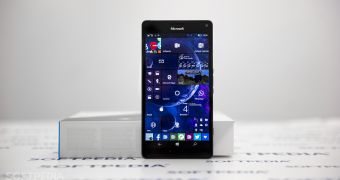
 14 DAY TRIAL //
14 DAY TRIAL // 











